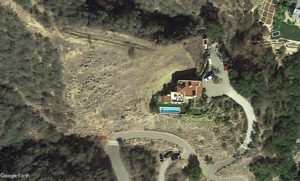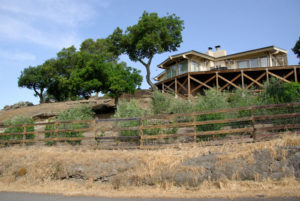The Home’s First Line of Defense
For homes and structures that already exist in areas at risk of being affected by wildfire, defensible space is a first step to better-protecting your home. The primary purpose of defensible space is to keep flames from occurring immediately adjacent to the home. It can also help allow better movement for firefighters needing to set up around the home.
Defensible space is often described as vegetation clearance around a home, but even that is too broad of a definition. Not all vegetation around the home needs to be removed. In fact, some fire resistant vegetation can help screen embers from an advancing fire in the distance.
Complete Clearance is Unnecessary
Fire scientists have determined the ideal recipe for defensible space:
- Vegetation should be cleared no further than 100 ft from buildings, as further than this adds no extra protection
- Woody vegetation immediately adjacent to structures should be reduced by only 40%
- Vegetation should not overhang or touch structures
 To the left is an example of excessive defensible space around a home in the central coast region. Vegetation nearly 200 ft away from the home has been unnecessarily cleared. This kind of clearance not only eliminates habitat, reduces aesthetic quality, and contributes to soil erosion and slope instability, but it can even encourage the growth of invasive grasses and weeds that may spread wildfire more quickly.
To the left is an example of excessive defensible space around a home in the central coast region. Vegetation nearly 200 ft away from the home has been unnecessarily cleared. This kind of clearance not only eliminates habitat, reduces aesthetic quality, and contributes to soil erosion and slope instability, but it can even encourage the growth of invasive grasses and weeds that may spread wildfire more quickly.
One Piece of the Puzzle
As important as smart defensible space is, having it does not ensure that a home will not burn during a wildfire. Defensible space is just one piece of the puzzle to reducing the risk of home ignition. Homes should also be constructed or retrofitted with fire-safe materials that reduce the risk of ignition from embers (also called firebrands) that are carried out in front of a wildfire. Local governments should also restrict development in fire-prone areas, as homes are more likely to burn in areas that have previously experienced wildfires. You can read more on our fire page.







